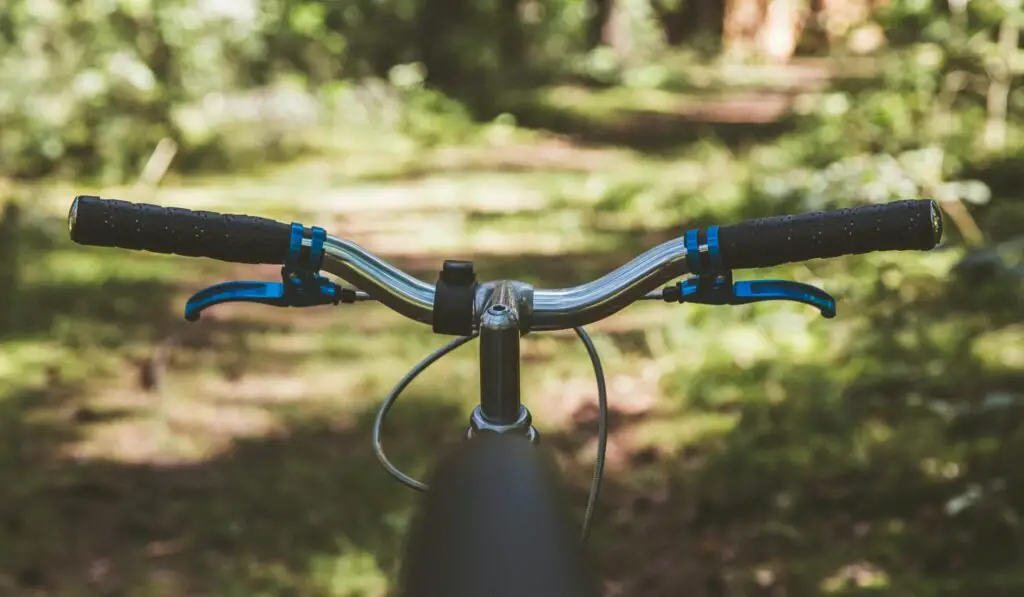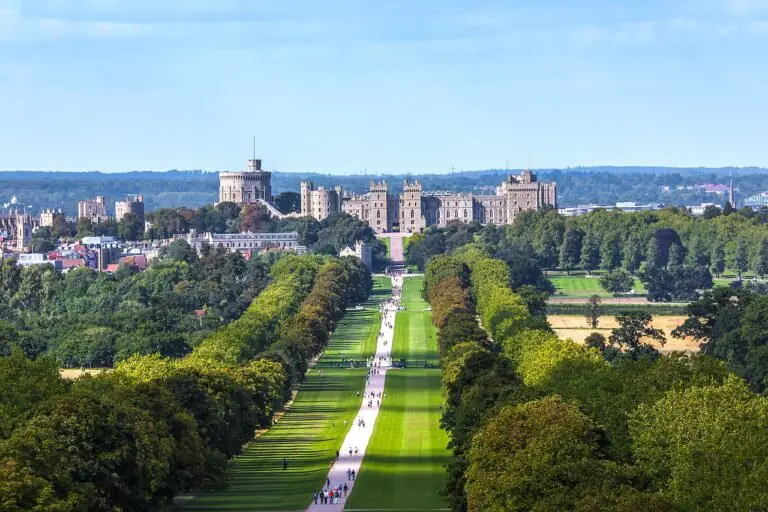Understanding the "No Cycling" Sign in UK
Cycling in the UK is a great way to discover its stunning scenery and lovely villages. It’s a good choice for your health and the environment, letting you take in the sights, sounds, and scents of a location in a special manner. British culture has a strong connection to cycling, as the London Polytechnic Cycling Club, the world’s first cycling club, was established in 1878. Given this extensive cycling heritage, it’s no wonder that the UK has a wide array of designated cycling paths and routes.
Just like any other mode of transportation, there are road rules that need to be followed when cycling. One significant sign you may come across during your travels is the no cycling sign. It’s crucial to understand the meaning of this sign and show respect for it while exploring a new place. By doing so, you can ensure a safe and enjoyable cycling experience.
This article aims to examine the “no cycling sign” in the UK. We will discuss its appearance, typical placements, and the rationale behind its implementation. Furthermore, we will offer suggestions on finding alternative routes and maintaining safety while enjoying your cycling expeditions.

Recognizing the “No Cycling” Sign
The no cycling sign is easily recognized by all. It has a red circle with a white background. Inside the circle, there is a black bicycle silhouette with a red diagonal bar across it. This sign clearly shows that cycling is not allowed in that area. Sometimes, you may see the words “No Cycling” below the symbol to make it even clearer.
It’s important to distinguish the “no cycling sign” from other related signs you might see on your travels. Here’s a quick breakdown:
- No bicycles sign: This sign, though similar, has a broader meaning. It might prohibit all two-wheeled vehicles, including bicycles, scooters, and motorcycles.
- No bikes sign: This is another variation you might encounter, essentially conveying the same message as “no cycling sign.”
- No cyclists sign: This sign specifically prohibits cyclists, but might allow other forms of non-motorized transport like pedestrians or rollerbladers.
- No cycle route sign: This rectangular sign with a white background and a red border usually displays a diagonal red bar across a blue bicycle symbol. It signifies the end of a designated cycle route, not necessarily a complete ban on cycling.
Knowing these small distinctions will make it easier for you to travel around the UK on a bike.
When and Why You Might See a “No Cycling” Sign
There are several reasons why you might encounter a “no cycling sign” on your travels. Here are some common scenarios:
- Pedestrian Zones: Many town centers and shopping areas prioritize pedestrians, making cycling unsafe or impractical. These areas will often have designated pedestrian zones marked with “no cycling” signs.
- Shared Spaces: Some narrow streets or paths might be shared by pedestrians and cyclists. However, if the space is deemed too limited for safe coexistence, a “no cycling” sign might be used to direct cyclists to an alternative route.
- Public Transport Lanes: Bus lanes or dedicated lanes for trams or taxis often have “no cycling” signs to maintain traffic flow and prioritize public transport.
- Dangerous Areas: Certain roads or paths might be deemed too dangerous for cycling due to steep inclines, sharp bends, or heavy traffic. In such cases, “no cycling” signs will be used to direct cyclists to a safer route.
Private Property: Private roads or driveways leading to private property might have “no cycling” signs to restrict access.
Following the Rules: Why “No Cycling” Signs Matter
Even though it may be tempting to bypass a “no cycling” sign, it’s crucial to adhere to these signs for safety and other important reasons:
- Safety: Signs that say “No cycling” are usually put in places where it’s dangerous to ride a bike. If you don’t pay attention to the sign, you might get into an accident with people walking, cars, or other vehicles.
- Respecting Others: The purpose of pedestrian zones and shared spaces is clear. By adhering to the “no cycling” signs, you display respect towards pedestrians and other individuals utilizing the space.
Fines and Penalties: Failure to obey “no cycling” signs could lead to penalties imposed by the local authorities.
Finding Alternative Routes When You See a “No Cycling” Sign
So, you’ve come across a “no cycling” sign on your planned route. Don’t fret! Here are some tips for finding an alternative:
- Consulting a Cycling Map: Get a quality cycling map for the area you’re exploring. The map will show you the best cycling paths, lanes, and routes, helping you avoid areas where cycling is not allowed. Some smartphone apps also have special features for cycling navigation.
- Asking Locals: British people are famous for being friendly! Feel free to approach a local or inquire at a tourist information center for help with navigating the “no cycling” zone.
- Looking for Signage: Look for signs that say you can’t ride a bike, but also look for signs that show you where you can go instead.
Using Online Resources: SYou can find various online tools to assist you in mapping out your cycling route in the UK. Websites like Sustrans and the National Cycle Network https://www.sustrans.org.uk/national-cycle-network provide comprehensive information on cycling paths and routes across the country. These resources are particularly useful when it comes to planning extended cycling trips.
Staying Safe on Your Cycling Adventures in the UK
You now have the information to understand “no cycling” signs. Here are more tips for a safe and fun cycling experience in the UK.
- Be Visible: Invest in a good quality bike light, especially if you plan on cycling at dusk or dawn. Wear brightly colored clothing that makes you visible to motorists and pedestrians.
- Obey Traffic Laws: Just like cars, bicycles are considered vehicles on the road. Always follow traffic signals, stop signs, and one-way street regulations.
- Use Designated Cycle Paths: Whenever possible, prioritize designated cycle paths and lanes. These routes are specifically designed for cyclists and offer a safer riding experience.
- Be Aware of Your Surroundings: Avoid distractions like using your phone while cycling. Stay alert to potential hazards like opening car doors, potholes, or uneven surfaces.
- Use Hand Signals: Even though not mandatory in the UK, using hand signals to indicate turns or stopping can improve communication with other road users.
- Maintain Your Bike: Ensure your bike is in good working condition before setting off. Regularly check brakes, tires, and gears to avoid breakdowns on the road.
- Respect Other Users: Share the road responsibly, giving pedestrians and other cyclists ample space. Be courteous and avoid aggressive riding behavior.
To have a secure and remarkable cycling adventure in the breathtaking UK scenery, simply follow these suggestions and show respect for “no cycling” signs. Get ready to discover the marvels of Britain on two wheels by packing your belongings and inflating your tires!
FAQ:
What does a "no cycling" sign look like?
The "no cycling" sign is a red circle with a white background. Inside the circle, a black silhouette of a bicycle is depicted with a diagonal red bar going through it. There might also be text "No Cycling" written underneath the symbol.
What's the difference between "no cycling," "no bicycles," "no bikes," and "no cyclists" signs?
- "No Cycling" is the most common sign specifically prohibiting bicycles.
- "No Bicycles" or "No Bikes" might also encompass other two-wheeled vehicles like scooters or motorcycles.
- "No Cyclists" might allow other forms of non-motorized transport like pedestrians or rollerbladers.
Where might I encounter "no cycling" signs?
- Pedestrian zones in town centers or shopping areas.
- Shared spaces with limited space for safe coexistence between pedestrians and cyclists.
- Public transport lanes like bus lanes or tram lanes.
- Dangerous roads or paths with steep inclines, sharp bends, or heavy traffic.
- Private roads or driveways leading to private property.
Why are "no cycling" signs important?
- They prioritize safety by directing cyclists away from hazardous areas.
- They ensure respect for pedestrians and other users of designated spaces.
- Disregarding them can lead to fines.
What should I do if I see a "no cycling" sign on my planned route?
- Consult a cycling map or app to find alternative routes.
- Ask locals or check signage for directions around the "no cycling" zone.
- Utilize online resources like Sustrans or the National Cycle Network to plan alternative routes, especially for longer journeys.




